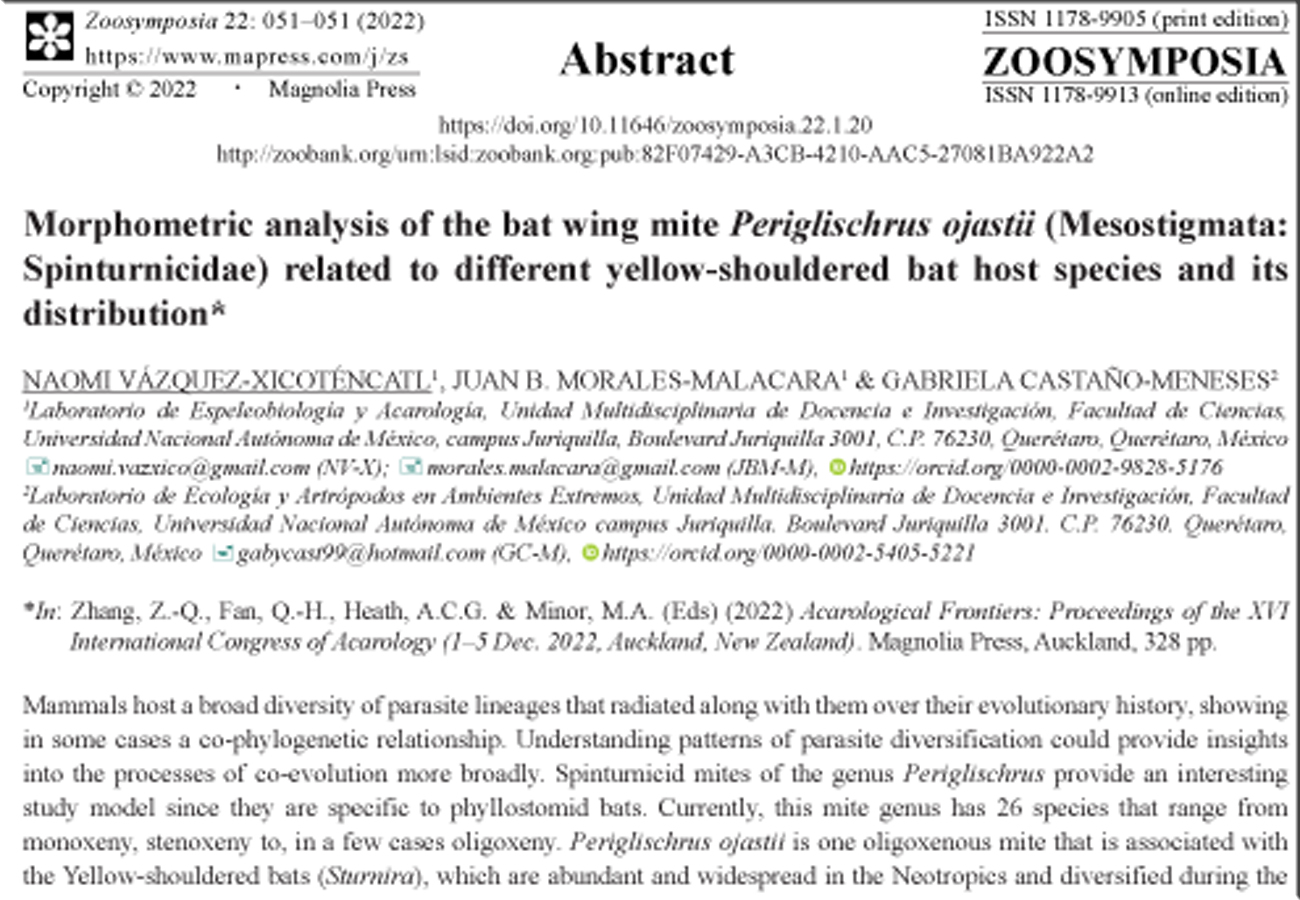Abstract
Mammals host a broad diversity of parasite lineages that radiated along with them over their evolutionary history, showing in some cases a co-phylogenetic relationship. Understanding patterns of parasite diversification could provide insights into the processes of co-evolution more broadly. Spinturnicid mites of the genus Periglischrus provide an interesting study model since they are specific to phyllostomid bats. Currently, this mite genus has 26 species that range from monoxeny, stenoxeny to, in a few cases oligoxeny. Periglischrus ojastii is one oligoxenous mite that is associated with the Yellow-shouldered bats (Sturnira), which are abundant and widespread in the Neotropics and diversified during the Pliocene. This study aimed to evaluate the morphometric and geometric variation on Periglischrus ojastii associated with the diversification and distribution of its host bat species of the genus Sturnira, as possible evidence of co-evolution.
References
-


